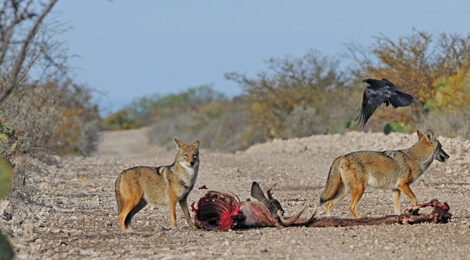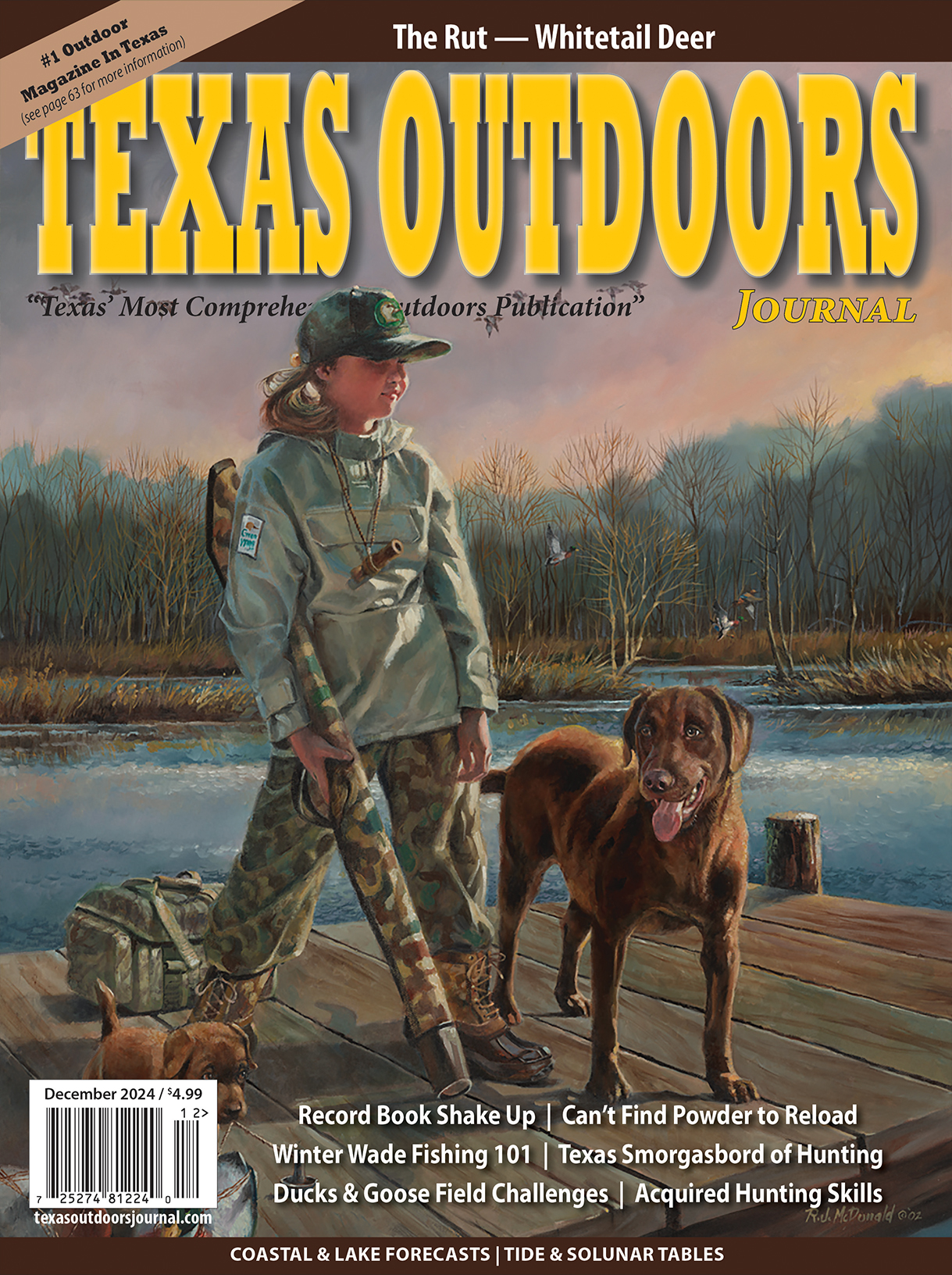
Rio Lobo
The major concern wildlife managers have with the coyote is the indiscriminate manner in which they kill deer.
Story and photography by Bob Zaiglin
As the blistering hot August sun was about to disappear below the horizon, a pair of young coyote pups appeared at the face of a sizable hole underneath a large water pila. The rambunctious youngsters immediately began frolicking amidst scattered bones of various rodents in front of the den. Suddenly mom appeared at the entrance, and before long they were following her into the ocean of brush, about to get another lesson in survival as they were now old enough to begin catching their own meals.
Although their diet consisted of a variety of rodents to grasshoppers, August was prime time for the adult female to provide them with a substantial amount of protein, as they were rapidly developing physiologically and required the additional protein to promote muscle and bone growth. The objective for mom was to capture a rodent, if not a fawn, and more importantly, demonstrate to the youngsters how to perform such activities on their own.
The trio negotiated their way through the jungle of twisted brush. The ground layer was void of grass and weeds as drought gripped the region, relinquishing few places with adequate herbaceous cover for fawns to hide, not only to escape the deadly rays of the sun, but more importantly to evade various predators, particularly their number one killer, the coyote. With peak fawning season in South Texas occurring sometime around mid-July, an abundance of recently born fawns were available, and because of a lack of rainfall, escape cover was limited, representing an advantage to the coyote.
************************************************************************
To read more, click here to SUBSCRIBE








